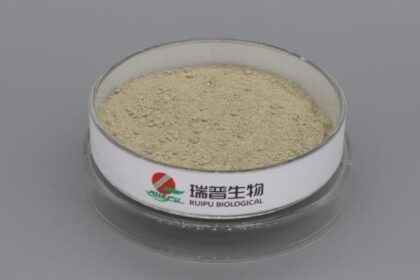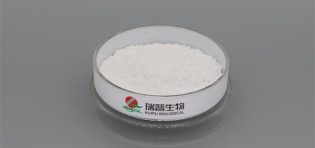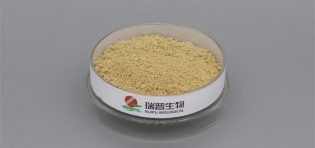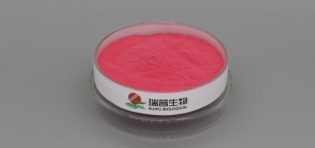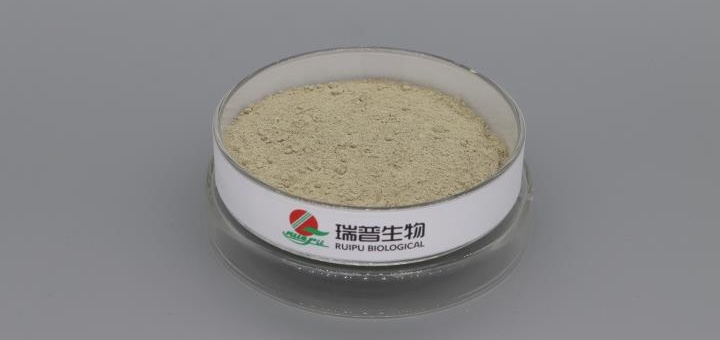
Ferrous gluconate, as a highly safe ferrous salt, exhibits unique antioxidant properties in food packaging. Its mechanism of action is based on the synergistic effect between the reducibility of Fe²⁺ and packaging materials, which can effectively inhibit food oxidative deterioration and extend the shelf life. The following is an analysis from the aspects of antioxidant principle, application forms, and practical effects:
I. Antioxidant Mechanism
The antioxidant properties of ferrous gluconate stem from the reducibility of Fe²⁺ released by its dissociation:
Direct scavenging of reactive oxygen species: Fe²⁺ can react with reactive oxygen species such as hydroxyl radicals (・OH) and superoxide anions (O₂⁻・) generated by oxidation in the food system. Through electron transfer, it reduces these species to harmless substances (e.g., H₂O), blocking the transmission of oxidative chain reactions.
Chelation of pro-oxidative metal ions: Transition metal ions such as Cu²⁺ and Fe³⁺ naturally present in food are catalysts for oxidation reactions (e.g., promoting the decomposition of lipid hydroperoxides into free radicals). Gluconate can chelate these metal ions through coordination, reducing their catalytic activity and indirectly inhibiting oxidation.
Synergistic enhancement of barrier with packaging materials: When ferrous gluconate is incorporated into packaging materials (e.g., films, coatings), it not only exerts its own antioxidant effect but also synergizes with functional components in the materials (e.g., antioxidants, barriers). This reduces the penetration of pro-oxidative factors such as oxygen and light, forming a "dual protection" system.
II. Application Forms in Food Packaging
Active packaging films
Ferrous gluconate is mixed into packaging film substrates (e.g., polyethylene, polylactic acid, cellulose) via melt blending, solution casting, etc., to produce active films with antioxidant functions. For example, adding 0.5%-2% ferrous gluconate to polyethylene films enables the continuous scavenging of oxygen in the package through the slow release of Fe²⁺, which is particularly suitable for high-fat foods (e.g., nuts, meat). The advantage of such films is the integration of antioxidant components with the packaging, eliminating the need for additional antioxidants. Moreover, the release rate of Fe²⁺ can be regulated by film thickness and substrate porosity to avoid excessive release causing food discoloration.
Antioxidant coatings
Ferrous gluconate is mixed with film-forming agents (e.g., chitosan, gelatin) and coated on the inner surface of paper or plastic packaging to form a uniform antioxidant coating. Ferrous gluconate in the coating can directly contact the food surface, preferentially scavenging reactive oxygen species around the food. Its water-soluble characteristic also makes it more effective in humid environments (e.g., fresh food packaging). For example, coating chitosan containing ferrous gluconate on the surface of fresh meat packaging paper can inhibit the oxidation of myoglobin to metmyoglobin, delay meat browning, and extend the freshness period by 2-3 days.
Sustained-release microcapsules
To prevent Fe²⁺ from affecting food flavor or being oxidized and inactivated due to direct contact with food, ferrous gluconate can be embedded in microcapsules (using wall materials such as starch and cyclodextrin) before being added to packaging materials. Microcapsules slowly release Fe²⁺ by controlling the degradation rate of the wall material (e.g., breaking under humidity or temperature stimulation), achieving long-term antioxidant effects. This form is suitable for flavor-sensitive foods (e.g., baked goods, dairy products) to reduce the potential metallic taste caused by Fe²⁺.
III. Practical Application Effects and Advantages
High efficiency: At the same addition level, ferrous gluconate has better antioxidant effects than traditional fat-soluble antioxidants (e.g., BHT). Especially in water-based food systems (e.g., fruit juices, sauces), its better solubility improves antioxidant efficiency by 20%-40%. For example, packaging films containing ferrous gluconate can reduce the peroxide value (POV) of fried potato chips by more than 50% after 1 month of storage.
Safety: Ferrous gluconate is a food-grade additive (compliant with GB 14880 standards). Its Fe²⁺ can participate in iron metabolism in the human body without toxic residue risks, avoiding potential health hazards of synthetic antioxidants.
Compatibility: It has good compatibility with packaging materials, hardly affecting the mechanical properties of materials (e.g., tensile strength and flexibility of films), and has little impact on food color and flavor (no obvious metallic taste at low concentrations).
IV. Limitations and Optimization Directions
The antioxidant properties of ferrous gluconate also have certain limitations:
Susceptibility to oxidation and inactivation: Fe²⁺ itself is easily oxidized to Fe³⁺ by oxygen, leading to reduced antioxidant capacity. It is necessary to improve stability by adding reducing agents (e.g., vitamin C) or coating technologies (e.g., microencapsulation).
Limited application range: In highly acidic foods (e.g., pH < 4), Fe²⁺ may react with organic acids to form precipitates, affecting antioxidant effects. Adaptability needs to be improved through pH regulators or carrier material modification.
Future efforts can focus on enhancing synergistic effects through composite antioxidant systems (e.g., compounding with tea polyphenols, rosemary extract) or combining with intelligent packaging technologies (e.g., responsive release of Fe²⁺ based on oxygen concentration) to further improve its antioxidant efficiency in food packaging.
Ferrous gluconate, with its high safety and diverse antioxidant mechanisms, shows promising applications in food packaging, especially in active packaging films and coatings, providing a green and efficient solution for food oxidation protection.


